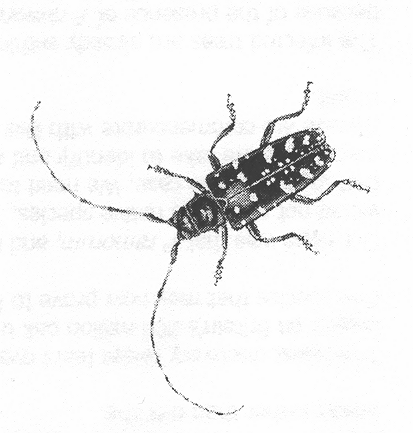As of September 2021, a number of new publications or presentations focus on four major forest pests: the Asian longhorned beetle, emerald ash borer, sudden oak death, and the Asian gypsy moth. Here’s a summary.
Asian longhorned beetle (ALB)
In many ways, the ALB is the poster child for wood-borers introduced in wood packaging (SWPM). ALB has been transported multiple times in the 30 or more years since the world opened to goods from China. Outbreaks have been detected in ~50 locations in North America, Europe, the Middle East (Trotter 2021, full citation at end of the blog), even in Asia – it was detected in Japan in 2002 (eradicated) and 2020 (Shoda-Kagaya 2021). Put another way, 33 countries recorded outbreaks as of July 2021 (Porth 2021). About half of the 50 outbreaks have been eradicated; the remaining are under active management, including four of the largest populations in the U.S. (Trotter 2021)
A Canadian genetic study (Porth 2021) of five U.S. outbreaks (New York/New Jersey, Massachusetts, Illinois, and Ohio) and the two outbreaks in Toronto indicated two major sources of ALB: the North China plain and Korea (source of the Massachusetts populations). The second Toronto outbreak probably began with survivors of the first that escaped eradication. I note that shortly after the New York and Chicago outbreaks were detected, scientists said the most likely source was the northern plains of China, where China had planted large stands of poplars which quickly were attacked by ALB. These trees were made into crates and pallets to support to booming exports.
In Japan, ALB attacks elms, birches, and willows, not maples. Longer study will provide additional information about hosts (Shoda-Kagaya 2021).
A Swiss study (Augustinus 2021) confirms others’ finding that imports of stone are particularly likely to be associated with ALB-infested SWPM.
As I noted in an earlier blog, the latest U.S. outbreak in South Carolina presents several challenges. There are indications that the beetle completes its life cycle much faster in the subtropical climate – possibly within eight months (compared to two years in Massachusetts and Ohio). Also, APHIS is exploring new methods to destroy infested or vulnerable trees because workers can’t use heavy chipping equipment in swamps (Trotter 2021)
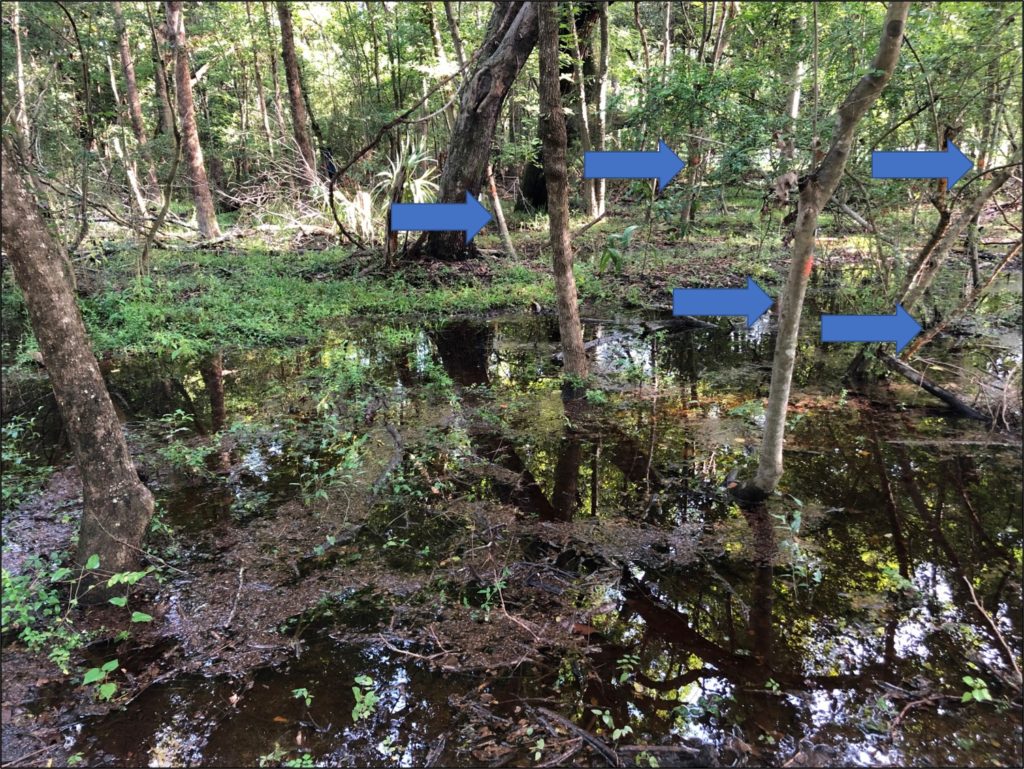
Emerald ash borer (EAB)
The EAB has been transported much less frequently in SWPM but once introduced it has proved much more difficult to eradicate or even contain. As a result it has caused much greater destruction. In North America, EAB is established in 35 states and five provinces. In the U.S. alone, an estimated 8.7 billion ash trees are under threat; this represents 2.5% of all U.S. aboveground biomass (de Andrade 2021).
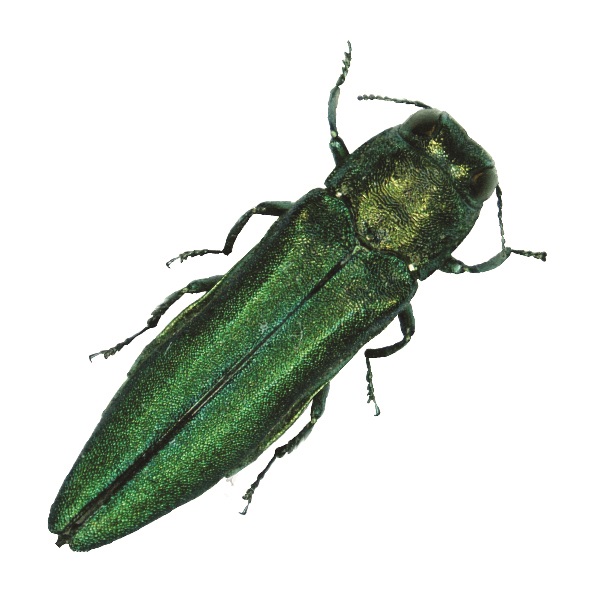
In Europe, EAB is currently established in one province of Ukraine and 18 provinces of Russia. These include areas in St. Petersburg and in the Lower Volga basin that are separated from the core invasion range (Moscow) by 470 and 370 km, respectively. In Moscow EAB has caused mass mortality of European ash (F. excelsior); initial damage had been to the introduced North American species, green ash (Fraxinus pennsylvanica) (Volkovitsh, Bienkowski and Orlova-Bienkowskaja 2021).
In January 2021, USDA APHIS ended its 19-year domestic quarantine and regulation of movement of EAB-infested wood (e.g., firewood). Blogs objecting to this APHIS is now focused on applying classical biocontrol. As of September 2020, PPQ and its partners had released ~ 8 million parasitoid wasps in 350 counties in 30 states and Washington, DC (APHIS report; Duan 2021). APHIS reports successful recovery of wasp offspring in 22 states. The agency claims those recoveries demonstrate that the wasps are reproducing, becoming established in the areas where they were released, and most important, attacking and killing the beetles.
Duan (2021) says long-term study sites in Maryland, Michigan, Connecticut, Massachusetts and New York indicate that two of the four introduced biocontrol agents, the larval parasitoids Testrastichus planipennisi and Spathius galinae, have established co-existing populations via niche partitioning on different ash tree size classes. T. planipennis dominates on saplings and small ash trees while S. galinae predominates in pole- and sawtimber-sized trees. Duan says both parasitoids appear to have played a significant role in suppressing EAB populations, although he admits that it is too early to tell if we will see significant improvement in ash recovery and regeneration.
De Andrade (2021) has begun what he hopes will be a range-wide analysis of the impact of the biocontrol effort. He notes that Spathius galinae – although first releases began as recently as 2015 – is showing the best results, possibly because it does attack EAB larvae in larger trees. It will be some years before the efficacy of the program can be determined.
In its FY2020 annual report (citation at end of blog), APHIS notes that the disease sudden oak death was confirmed as present in a 16th California county (Del Norte) that year. This detection thus connects quarantined areas from south of San Francisco to the one county in southwest Oregon (Curry County) where the disease is wreaking havoc.
The report notes that the causal pathogen, Phytophthora ramorum, can be moved through nursery stock. APHIS took its most important recent action regarding nursery transmission in FY2019, when it relaxed regulatory requirements. In May 2019 – during FY 2020 — a large “spill” of the pathogen on nursery stock from West Coast nurseries resulted in possibly infected plants being shipped to 18 states. The FY2020 report says nothing about this event. Instead, APHIS reports that in FY 2020, 25 nurseries participated in the interstate regulatory program and the agency released two from strict post-infection regulation. PPQ also supports annual surveys, with 23 states participating.
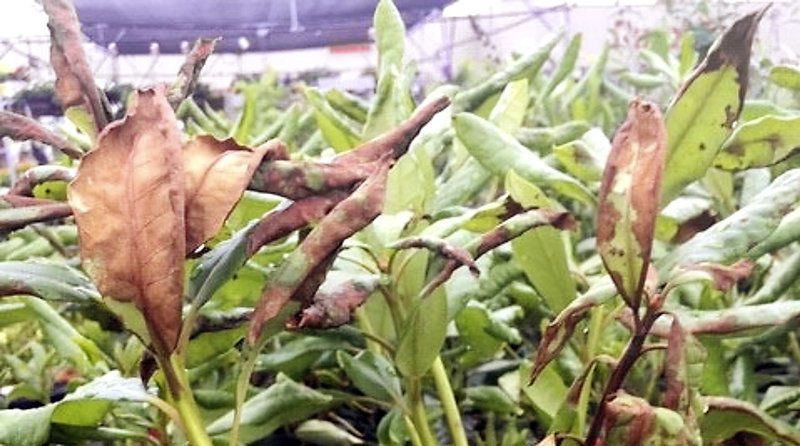
In 2021 there was an even larger incident of infected plants being shipped to nurseries. We’ll see if APHIS includes this failure in next year’s Annual Report.
Asian gypsy moth (AGM)
The several species of Lymatria native to Asia are considered to pose a serious threat to North American forests. Tussock moths in East Asia have a much wider host range than the European Lymantria dispar dispar established in eastern North America. In many cases, the females fly – a behavior which would undermine the control measures applied in the East. Finally, beginning in the early 1990s, new trade patterns created opportunities for these moths to reach North America.
Several leaders of the U.S. and Canadian efforts to prevent their establishment have just published a fascinating history of how the prevention program targetting East Asian tussock moths was adopted (Mastro et al. 2021). The history notes that the first detections of AGM in the Pacific Northwest and British Columbia in the early 1990s posed several challenges to the phytosanitary agencies. These challenges were:
- how to justify under international trade rules regulating insects belonging to what was then thought to be the broad species Lymatria dispar. That species had been established (ever more widely) in eastern North America since 1869. While this crisis arose before adoption of the World Trade Organization, its Agreement on the Application of Sanitary and Phytosanitary Standards, and the new language of the International Plant Protection Organization, the U.S. negotiating position was that it should be “against the rules” to regulate new introductions of established pests. For a thorough discussion of these issues, go to Fading Forests II.
- how to manage introductions via ships rather than the plant-origin commodities that they usually regulate.
The threat prodded the agencies to overcome these obstacles – a welcome exercise of initiative! Within a few years, APHIS and its Canadian counterpart (Canadian Food Inspection Service) developed a multi-layered monitoring and inspection program that was applied first to Russia and later to Japan, Korea, and China. Adoption of regulations was assisted by a simultaneous determination by scientists that the tussock moths of Asia actually belong to several species, including but not limited to L. dispar asiatica and L. dispar japonica. I blogged about recent successes and failures of this program and about a recent analysis of additional related species that also should probably be regulated.
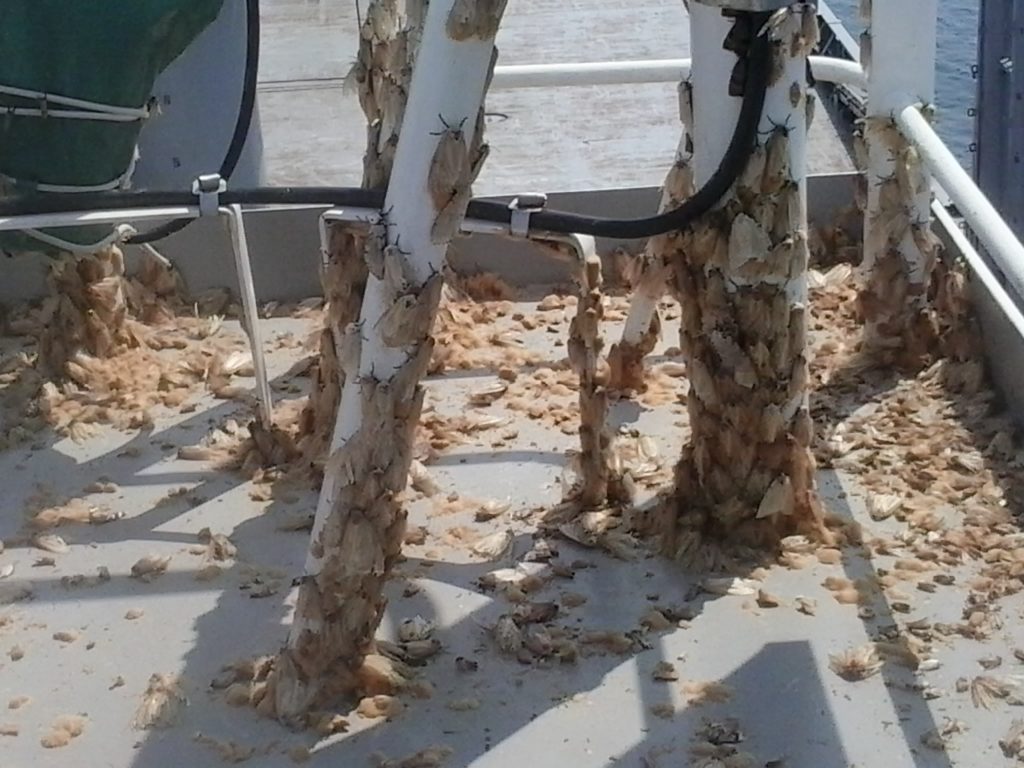
Mastro et al. (2021) report that AGM incursions in the U.S. have been discovered on 62 occasions between 1991 and 2019. These have resulted in expensive projects which have – so far – prevented establishment of AGM. These efforts are expensive for both APHIS and the states. APHIS has also funded intensive surveillance efforts, including under the Plant Pest and Disease Management and Disaster Prevention Program (Section 7721). In Fiscal Years 2018 through 2020, APHIS funded surveillance of “Asian defoliators” at more than $1 million each year.
APHIS ANNUAL REPORT FOR FY2020
In its most recent annual report (Helping U.S. Agriculture Thrive— Across the Country and Around the World Plant Protection and Quarantine: Fiscal Year 2020), APHIS provides some of the data on pests cited above. In addition, it reports the number of inspections conducted; pests intercepted and identified; and other agency activities.
Notably, APHIS claims credit for negotiating the agricultural components of the U.S.-China Phase One Economic and Trade Agreement (adopted in May 2020). APHIS says this agreement was the culmination of 20 years effort — and helped open the Chinese market to almost $1 billion annually in sales of U.S. agricultural commodities. When the agreement was announced, I blogged about my frustration that APHIS did not use take this opportunity to press the Chinese to ensure that their wood packaging is pest-free. Chinese wood packaging violates U.S. import rules more often than any other country and U.S. forests need not pay the price. [or something like that.]
As I noted above, the APHIS report makes no mention of the huge “spill” of the sudden oak death pathogen through the nursery trade in 2019 (FY2020). How can APHIS justify this omission?

SOURCES
Augustinus, B. Optimizing surveillance for priority and other quarantine forest pests in Switzerland. IUFRO Prague September 20 – 24, 2021
De Andrade, R. Emerald Ash Borer biocontrol in US IUFRO Prague September 20 – 24, 2021/
Duan, J. USDA Agriculture Research Service, Newark, DE in USDA document substituting for the 2022 USDA Forest Pest conference (“Annapolis”)”
Mastro, V.C., A.S. Munson, B. Wang, T. Freyman, & L.M. Humble. 2021. History of the Asian Lymantria species Program: A Unique Pathway Risk Mitigation Strategy. Journal of Integrated Pest Management, (2021) 12(1): 31; 1–10
Porth, Ilga. Universite Laval. Next-generation-sequencing-based biosurveillance for Anoplophora glabripennis IUFRO Prague September 20 – 24, 2021
Shoda-Kagaya, E. Current status of three invasive cerambycid pests in Japan. IUFRO Prague September 20 – 24, 2021
Trotter, R.T. USDA Forest Service, Hamden, CT in USDA document substituting for the 2022 USDA Forest Pest conference (“Annapolis”)
USDA APHIS PPQ Annual Report FY2020 Helping U.S. Ag Thrive— Across the Country and Around the World. Plant Protection and Quarantine: Fiscal Year 2020
Volkovitsh, M.G.; Bienkowski, A.O.; Orlova-Bienkowskaja, M.J. 2021. Emerald Ash Borer Approaches the Borders of the European Union and Kazakhstan and Is Confirmed to Infest European Ash. Forests
2021, 12, 691. https:// doi.org/10.3390/f12060691
Posted by Faith Campbell
We welcome comments that supplement or correct factual information, suggest new approaches, or promote thoughtful consideration. We post comments that disagree with us — but not those we judge to be not civil or inflammatory.
For a detailed discussion of the policies and practices that have allowed these pests to enter and spread – and that do not promote effective restoration strategies – review the Fading Forests report at http://treeimprovement.utk.edu/FadingForests.htm
